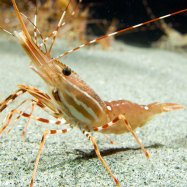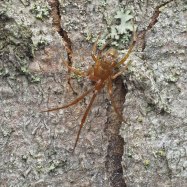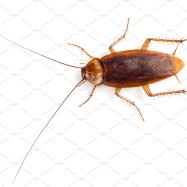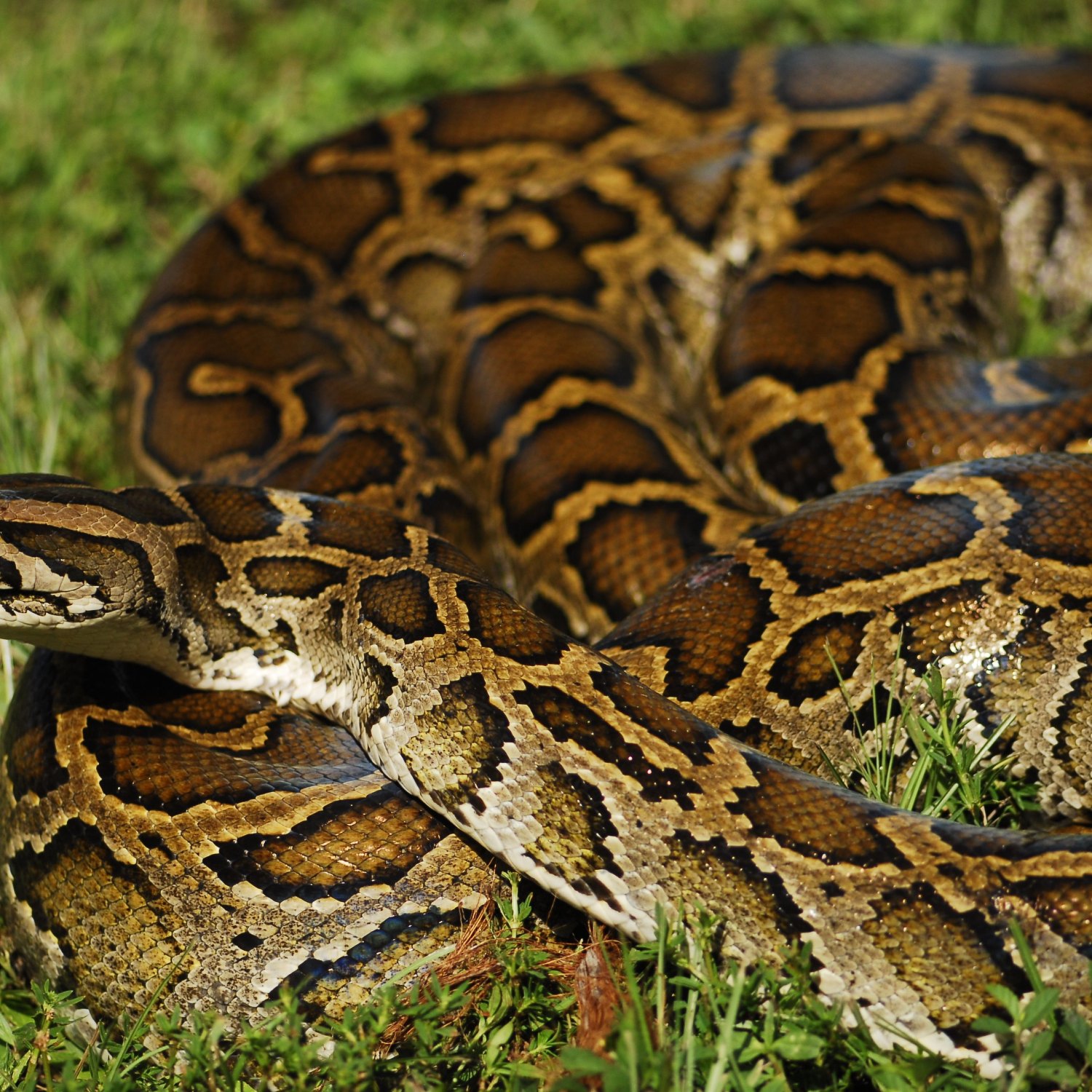
Burmese Python
Up to 18 feet
The Burmese Python, found in the Sundarbans, can grow up to 18 feet and belongs to the Pythonidae family. Known for their cylindrical body shape, these snakes are native to Southeast Asia and have become popular pets despite their size. However, proper care and handling are crucial as they can be a potential threat if not managed properly. #BurmesePython #Pythonidae #Sundarbans
Animal Details Summary:
Common Name: Burmese Python
Kingdom: Animalia
Habitat: Tropical Rainforests
The Mighty Burmese Python: A Fascinating Creature from the Tropical Rainforests
In the dense tropical rainforests of Southeast Asia, there is one creature that commands attention with its size and strength - the Burmese Python. Also known as Python bivittatus, this majestic reptile is a member of the Pythonidae family with a distinctive brown body adorned with dark blotches. Native to Myanmar (formerly known as Burma), this giant snake has captivated people for centuries with its impressive size, fascinating behavior, and unique features.As its name suggests, the Burmese Python is found in the rainforests of Southeast Asia, specifically in the Sundarbans area Burmese Python. This region is a large mangrove forest shared by both India and Bangladesh, making it a natural habitat for this heavy-bodied snake. With a length of up to 18 feet, the Burmese Python is one of the largest snakes in the world, and it is also a formidable predator in its ecosystem.
A Closer Look at the Burmese Python's Anatomy
The Burmese Python belongs to the reptile class, the phylum Chordata, and the order Squamata, which is the largest order of reptiles including lizards, snakes, and amphisbaenians. Its cylindrical body shape is a remarkable adaptation that makes it a highly efficient predator. Unlike other snakes, the Burmese Python has small spurs on both sides of its cloaca. These spurs are remnants of its hind limbs from its evolutionary history.One of the most striking features of the Burmese Python is its coloration. While most snakes are known for their vibrant colors, the Burmese Python's dark brown color with large, irregularly shaped dark blotches gives it excellent camouflage in its habitat. This is a crucial adaptation that helps it blend in with the surroundings while hunting or escaping predators Boxweiler.
The Burmese Python's Diet and Hunting Techniques
The Burmese Python is a carnivore, and its diet mainly consists of small mammals, birds, and other reptiles. As an ambush predator, it uses its excellent camouflage to its advantage. This snake will lie in wait, patiently observing its prey until it comes within range. With its powerful muscles and sharp, curved teeth, the Burmese Python can easily overpower and kill even the largest of its prey.As with all snakes, the Burmese Python can unhinge its jaw to swallow prey whole. In a single feeding, it can consume animals much larger than itself. This is made possible by the snake's flexible, mobile skull, and its ability to expand its jaw significantly. Once its meal is swallowed, the snake's digestive system works at an impressive rate, breaking down the food and extracting the necessary nutrients.
A Remarkable Journey of Habitat Adaptation
The Burmese Python's geographical distribution is limited to the tropical rainforests of Southeast Asia, especially in Myanmar (Burma). Despite its restriction to this region, this snake has adapted well to its surroundings and has been known to thrive in various habitats, including marshes and grasslands.One of the most significant challenges for the Burmese Python is its ability to survive in diverse weather conditions. In the rainforest, the humidity level is high, and the temperature is relatively constant throughout the year. However, as the snake moves to different habitats, it must be able to withstand extreme temperatures and dry conditions. To combat this, the Burmese Python can regulate its body temperature by basking in the sun or hiding under the shade, depending on its needs.
Threats to the Burmese Python
Despite its impressive size and strength, the Burmese Python faces several threats in its natural habitat. One of the most significant threats to its survival is habitat loss due to deforestation and human encroachment. With the loss of its natural habitat, the Burmese Python is forced to find shelter in human-populated areas, increasing its chances of being killed.In addition to habitat loss, the Burmese Python is also hunted for its skin, which is used for leather goods and traditional medicine. This has led to a decline in the population of this species in the wild, and they are now considered vulnerable by the International Union for Conservation of Nature (IUCN).
Burmese Python and Humans
The Burmese Python has been a subject of fascination and fear for humans for centuries. In Southeast Asian folklore, this snake is believed to be a symbol of strength and power, with many cultures associating it with deities and mythical creatures.In modern times, the Burmese Python has also gained popularity as a pet due to its impressive size and unique appearance. However, their size and strength make them difficult to handle, and they require specialized care, which has led to many owners abandoning them in the wild. This has resulted in the establishment of invasive populations in various areas, which poses a threat to the local ecosystem.
The Burmese Python's Role in NLP
With its fascinating features and unique adaptations, the Burmese Python has captured the attention of scientists and researchers in various fields. Its hunting strategies, anatomy, and behavior have been studied extensively, and its genome has been sequenced, making it an essential species for studies in Natural Language Processing (NLP).In NLP, Burmese Python is used as an example for language models as it has a rich vocabulary and complex communication system. The snake produces a diverse range of vocalizations, each with a distinct meaning, akin to human language. This has allowed researchers to study the evolution of language and communication in both animals and humans.
In Conclusion
In conclusion, the Burmese Python is a fascinating creature, with a complex evolutionary history and unique adaptations that have allowed it to thrive in its natural habitat. With its impressive size, coloration, and hunting techniques, this snake is an important species in the tropical rainforests of Southeast Asia. However, human activities, such as deforestation and illegal hunting, pose a threat to its survival.As we continue to learn more about this magnificent creature, it is essential to remember the impact we have on its population and habitat. By preserving their natural habitat and discouraging the illegal trade of this species, we can ensure that the Burmese Python continues to roam the tropical rainforests, captivating us with its majestic presence.

Burmese Python
Animal Details Burmese Python - Scientific Name: Python bivittatus
- Category: Animals B
- Scientific Name: Python bivittatus
- Common Name: Burmese Python
- Kingdom: Animalia
- Phylum: Chordata
- Class: Reptilia
- Order: Squamata
- Family: Pythonidae
- Habitat: Tropical Rainforests
- Feeding Method: Carnivore
- Geographical Distribution: Southeast Asia
- Country of Origin: Myanmar (Burma)
- Location: Sundarbans
- Animal Coloration: Brown with dark blotches
- Body Shape: Cylindrical
- Length: Up to 18 feet
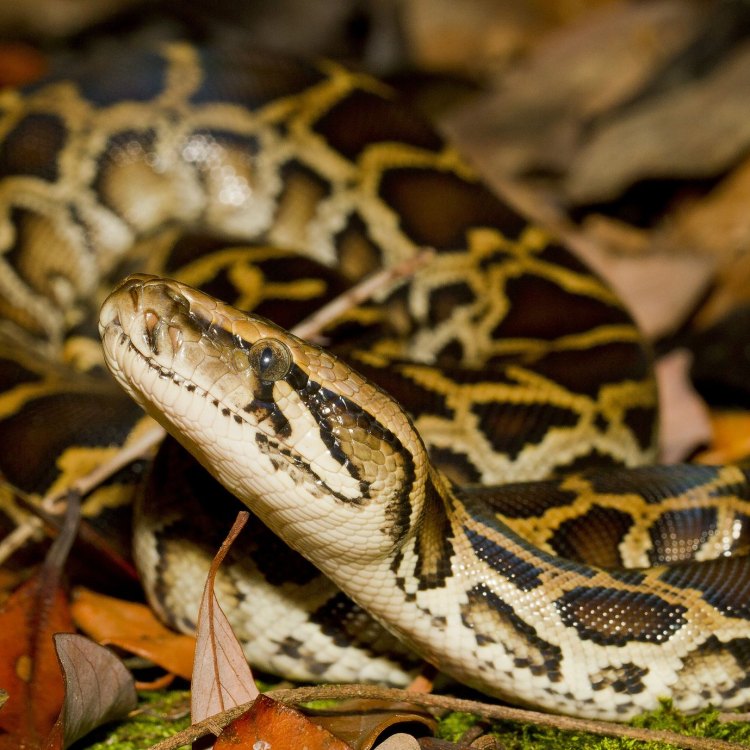
Burmese Python
- Adult Size: 10-18 feet
- Average Lifespan: 20-25 years
- Reproduction: Egg-laying
- Reproductive Behavior: Mating occurs during spring
- Sound or Call: Hisses and grunts
- Migration Pattern: Non-migratory
- Social Groups: Solitary
- Behavior: Crepuscular
- Threats: Habitat loss and hunting for skin and meat
- Conservation Status: Vulnerable
- Impact on Ecosystem: Invasive species
- Human Use: Pet trade, leather industry
- Distinctive Features: Large size, patterned scales
- Interesting Facts: One of the largest snake species in the world
- Predator: Humans
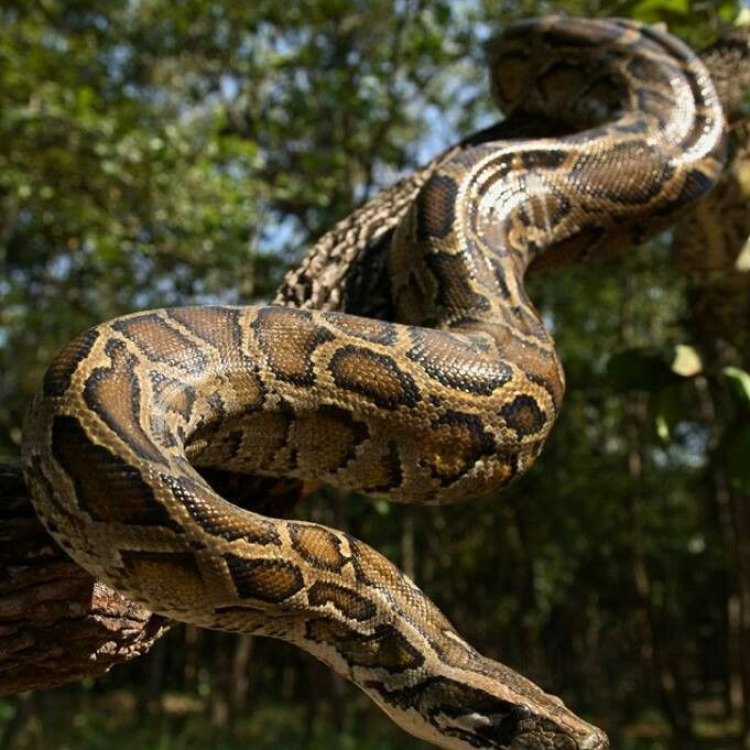
Python bivittatus
The Majestic Burmese Python: A Fascinating Creature with Unique Attributes
As the sun sets over the dense forests of Southeast Asia, a large serpentine creature slithers through the undergrowth, its distinctive patterned scales glistening in the fading light. The Burmese Python, native to this region, is a sight to behold with its enormous size and intriguing behavior. In this article, we will delve into the world of these magnificent creatures, exploring their physical characteristics, behaviors, and impact on their environment.Adult Burmese Pythons can reach lengths of 10-18 feet, making them one of the largest snake species in the world PeaceOfAnimals.Com. These impressive creatures have a lifespan of 20-25 years, living predominantly within the dense tropical forests of Myanmar, Thailand, and other neighboring countries. Their distinctive markings, a blend of brown, gold, and black, serve as a form of camouflage, allowing them to blend seamlessly into their natural habitat.
One of the most fascinating aspects of Burmese Pythons is their reproductive behavior. They are egg-laying creatures, with female pythons laying anywhere from 12-36 eggs in a single clutch. Reproduction occurs during the spring, with females attracting males through their hissing and grunting calls. Mating can last for several hours, with both snakes coiling and entwining their bodies in a mesmerizing dance.
Despite their large size, these creatures are solitary and do not form social groups. They are crepuscular creatures, meaning they are most active at dawn and dusk, spending the majority of their time resting and digesting their prey. This behavior is due to their cold-blooded nature, requiring them to bask in the sun for warmth Bairds Rat Snake. However, they are known to become more active during the breeding season.
The Burmese Python is non-migratory, meaning they do not undertake long-distance movements like many other snake species. They prefer to stay within their natural habitat, where they have a constant supply of food and shelter. This behavior is also influenced by their preference for warmer temperatures, as they are not capable of regulating their own body temperature like mammals.
Sadly, these beautiful creatures are facing many threats in their native habitat. One of the significant dangers they face is habitat loss due to deforestation. As human development continues to encroach on their natural habitat, these snakes are losing their homes and essential resources. Additionally, they are hunted for their skin, which is used in the leather industry, and their meat, which is considered a delicacy in some parts of Asia.
As a result of these threats, the Burmese Python is listed as "Vulnerable" on the International Union for Conservation of Nature's (IUCN) Red List of Threatened Species. This means that if conservation efforts are not put in place, this magnificent species could become endangered or even extinct in the future.
However, the negative impacts of Burmese Pythons are not just limited to their native habitats. In recent decades, these reptiles have become an invasive species in many parts of the world, including the United States. Due to the pet trade, where these snakes are bought as exotic pets, some have been released into the wild, where they have thrived and reproduced. Not native to the environment, they have caused significant disruptions to the ecosystem, preying on native species and competing for resources.
Despite the threats these creatures face and their invasive status in some regions, many humans still find them intriguing and captivating. Burmese Pythons have been kept as pets for centuries, with the ancient Egyptians believed to have domesticated them. In modern times, they are still popular in the exotic pet trade, although laws and regulations have been put in place to prevent the release of these snakes into the wild.
The leather industry also has a significant demand for Burmese Python skin, with their unique patterns making them a sought-after material for luxury goods. However, conservation efforts are being made to ensure that the snakes are ethically and sustainably sourced to prevent further harm to their populations.
In addition to their distinctive markings and large size, Burmese Pythons have several interesting features that make them stand out among other snake species. For example, they have been recorded reaching lengths of over 20 feet, making them one of the longest snake species in the world. They are also capable of consuming prey that is much larger than their own bodies, thanks to their flexible jaws and expandable stomachs.
Despite their size and intimidating appearance, humans are the biggest predators of Burmese Pythons. In their native habitat, they are hunted for their skin and meat, and in other regions, they are often killed out of fear or misunderstanding. However, these animals play a crucial role in their ecosystems, controlling rodent populations and serving as indicators of a healthy environment.
In conclusion, the Burmese Python is a fascinating creature with unique features and behaviors. Despite their impressive size, they are solitary and non-migratory animals that prefer to live in the dense forests of Southeast Asia. Unfortunately, they face numerous threats, both in their natural habitat and as an invasive species, and are listed as vulnerable on the IUCN Red List. As humans, it is essential for us to understand and appreciate these magnificent creatures and take steps to protect and conserve them for future generations to admire and learn from.
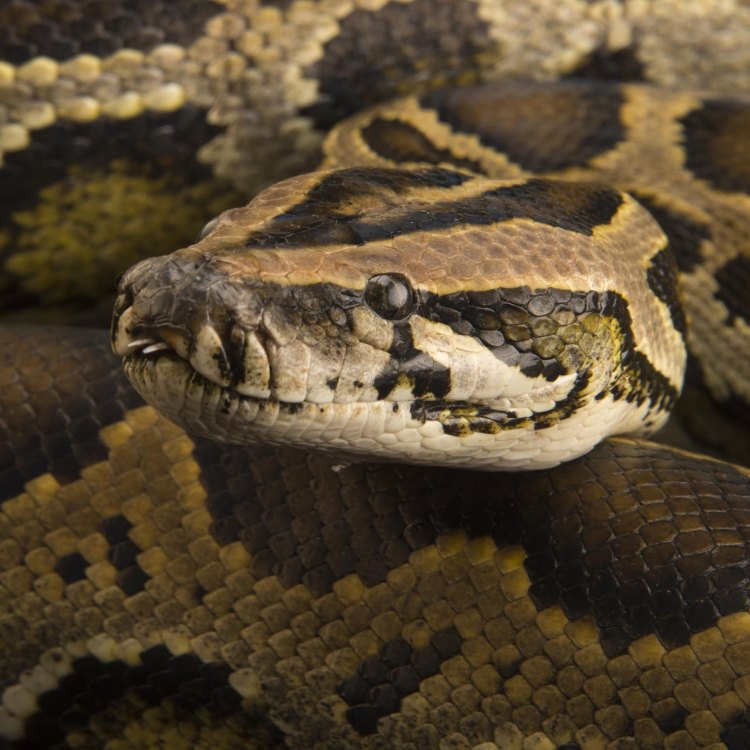
The Mighty Burmese Python: A Fascinating Creature from the Tropical Rainforests
Disclaimer: The content provided is for informational purposes only. We cannot guarantee the accuracy of the information on this page 100%. All information provided here may change without prior notice.


